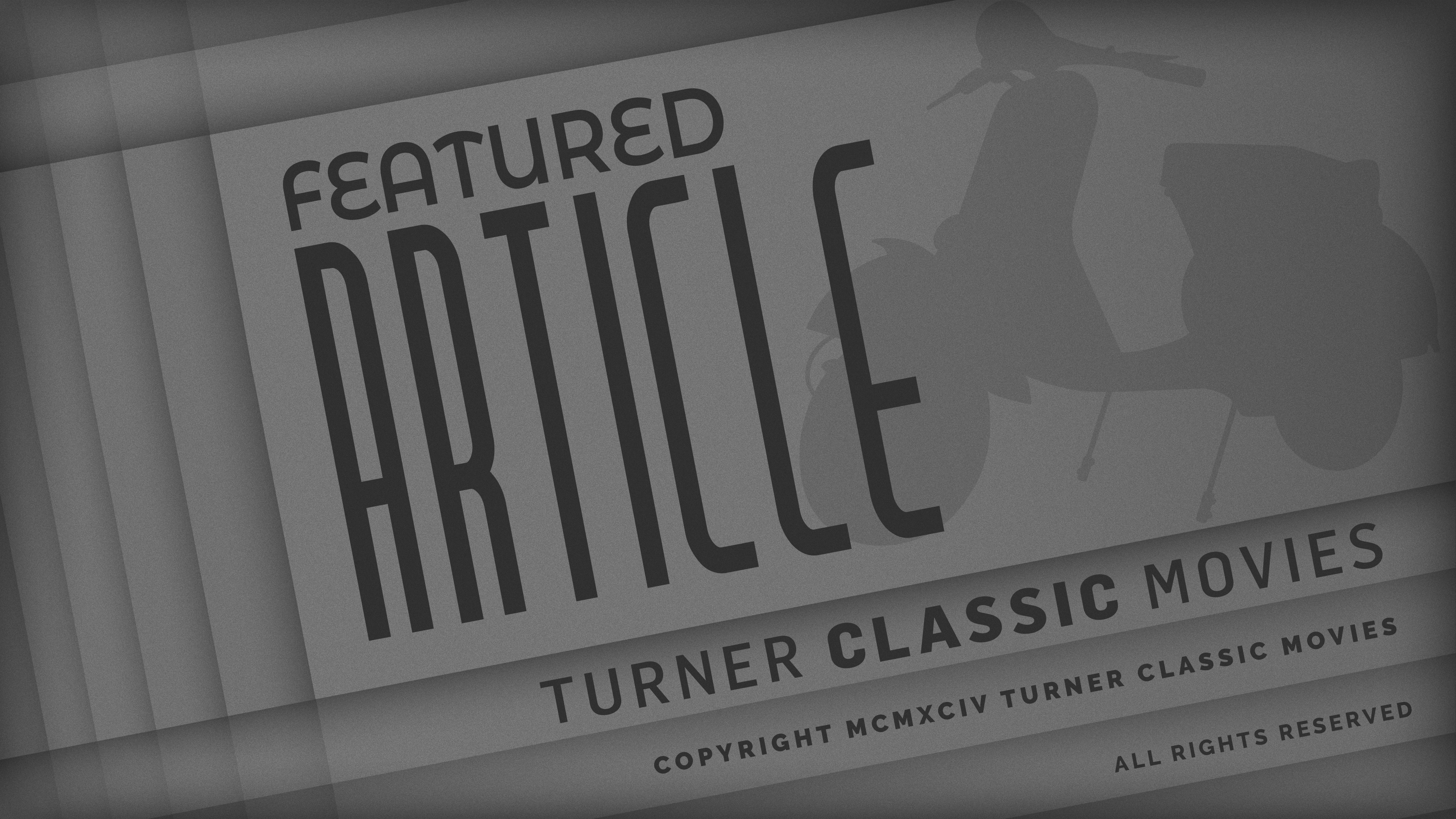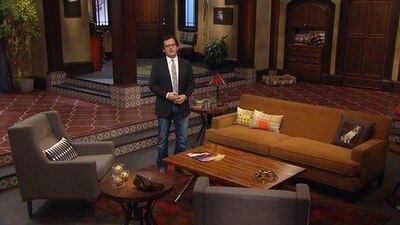Homicidal

Brief Synopsis
Cast & Crew
William Castle
Glenn Corbett
Patricia Breslin
Jean Arless
Eugenie Leontovich
Alan Bunce
Film Details
Technical Specs

Synopsis
As children, Miriam Webster and her half brother, Warren, had been cared for by Helga, a kindly nurse. The old woman is now mute and paralyzed and lives in a gloomy old mansion with a companion, Emily, Warren's alleged wife. Though Helga is threatened with murder by Emily, a homicidal maniac who has already killed the local justice of the peace, she is unable to communicate her deathly fear. Miriam and her fiance, Karl, become suspicious of Emily's strange behavior and discuss the situation with Warren. Karl decides to go to the police, and Miriam and Warren return to the old mansion, which Warren enters alone. When he fails to come out, Miriam goes in and discovers the murdered body of Helga. As she backs away in terror, she is suddenly confronted by Emily wielding a knife. Miriam watches in horror as Emily tears off her wig, thus establishing Warren and Emily as one and the same. As "Emily" raises her knife to stab Miriam, Dr. Jonas arrives unexpectedly at the house, and in the ensuing scuffle the psychotic killer is shot and killed by Miriam. Later it is revealed that following a trip to Denmark, Warren had taken on the psychopathic personality of Emily but had been forced to maintain his masculine identity in order to protect his inheritance. Both the justice of the peace and Helga were slain to keep them from exposing Warren's secret.

Director

William Castle
Cast

Glenn Corbett
Patricia Breslin
Jean Arless
Eugenie Leontovich

Alan Bunce

Richard Rust

James Westerfield
Gilbert Green
Wolfe Barzell
Hope Summers
Teri Brooks
Ralph Moody
Joe Forte

William Castle
Crew
Edwin Bryant
William Castle
Lambert Day
Hugo Friedhofer
Burnett Guffey
Dona Holloway
Ben Lane
Cary Odell
Charles J. Rice
Al Shenberg
Darrell Silvera
Robb White

Photo Collections
Film Details
Technical Specs

Articles
Homicidal
Based on the impressive box office sales of Castle's previous low-budget efforts, Columbia approved the gimmick and when Homicidal was released the prints included the "Fright Break" which was accompanied by the amplified sound of a heartbeat and a sixty second countdown. During an opening engagement of the film in Youngstown, Ohio, however, Castle panicked when he dropped in on a screening of it and witnessed most of the audience members rushing up the aisle for a refund when the "Fright Break" occurred. It quickly became apparent that most of the moviegoers had seen the movie and then remained for the second showing only to bolt during the break so they could get a full refund. Castle immediately rectified the situation requiring theatre owners to clear the theatre after each showing and he added an additional embellishment to the promotion - the Coward's Corner - which received as much press as the "Fright Break."
Castle recounted in his autobiography, "Yellow stripes appeared on sidewalks near the curb, leading past the theatres - and stenciled on the stripe: "Cowards, keep walking." Inside, large yellow footsteps were stenciled on the floor from the seats back to the box office - and over the box office there hung a sign: "Coward's Corner." A blood-pressure outfit sat on a table nearby, attended by a nurse who offered free tests to cowards. A yellow light bathed Coward's Corner, and a recorded message kept repeating, "These cowards are too frightened to see the end of Homicidal. Watch them shiver in the Coward's Corner. Coward...coward....coward." Homicidal was another hit for Castle and even he admitted "Of all the films I had made, Homicidal was the most fun. When we finally got the kinks out of the money-back guarantee, less than one percent of the audiences asked for a refund."
[Spoiler Alert] As for the film itself, it was accused of imitating Psycho but other than featuring a cross-dressing killer it had little in common with Hitchcock's thriller. The plot was a variation on the old-dark-house-with-a-family-secret coupled with a sex change allusion to one of the central characters, a perverse twist that was clearly capitalizing on the then-current tabloids' fascination with Christine Jorgensen, one of the first people to have sex reassignment surgery. In the film, Warren, the half-brother of Miriam Webster, has returned from Denmark and moved back into the family mansion with Helga, his childhood nurse, now a mute invalid, and Emily, Helga's companion - or is she Warren's wife? Miriam and her fiancé Karl sense all is not right in the Webster home and a series of strange incidents including the brutal slaying of the local justice of the peace convince them to alert the police. Unsatisfied with their investigation, Miriam decides to do her own sleuthing and visits the creepy Webster mansion alone, encountering something much worse than she imagined.
Homicidal is a schlock masterpiece, clumsily directed by Castle on cheap sets with crudely staged shock effects that only add to the film's unpretentious sense of fun. The pre-credit sequence sets up the acrimonious Miriam-Warren relationship and Castle even introduces the film while doing needlepoint which eventually serves as the title credit motif in the Norman Rockwell style of a Whitman sampler box. The real attraction, however, is the inspired casting of Jean Arless in the dual role of Warren and Emily. It's a much more compelling stunt than either the "Fright Break" or the "Coward's Corner" gimmick. Initially, Castle was thinking of casting a man to play the dual roles until talent agent Jerry Lauren introduced him to an actress named Joan Marshall. "We shook hands. Her grip was firm. "It's a very difficult part to cast, Miss Marshall. A known face would be easily recognizable to the audience, and the whole success of the picture depends on making audiences believe there are two people - a man and a woman." "Will you let me read the script, Mr. Castle?" Her voice was low-pitched and husky. Intrigued, I gave her the script of Homicidal." Castle was finally convinced to cast her after make up artist Ben Lane convincingly transformed her into a man. "Two hours later, Joan Marshall came back to my office. My secretary, not recognizing her, asked the man his name. The transformation was indeed astonishing." With some additional alterations including the use of contact lenses, wigs, and mouth and nose appliances, Joan Marshall became both Warren and Emily. It was Castle who changed her name for this film, billing her as Jean Arless - "It was a neutral name; it could have been either male or female."
The masquerade is completely transparent, of course, as soon as Warren is introduced into the film but the fascinating thing about "Jean Arless" is that she looks completely androgynous no matter what gender she is playing. As Emily, she looks like an angry drag queen and as Warren, she looks like an unconvincing male impersonator with a disturbing overbite. In real life, actress Joan Marshall was a familiar presence on television, making guest appearances in episodes of such popular series as Highway Patrol, The Twilight Zone, Surfside Six and Star Trek. She was married to director Hal Ashby and her final film appearance was playing a bit part in his 1975 box office hit Shampoo which allegedly was based on incidents from her life by screenwriters Robert Towne and Warren Beatty at Ashby's insistence. Joan was not amused.
Very few film critics took Homicidal seriously when it was first released with the exception of the Time magazine reviewer who placed it in his "Top Ten" best movies of the year, preferring it to Psycho (Was he drunk when he compiled his list?). Since then, however, the film continues to amass a cult following with many Castle fans proclaiming it his best film. Its kooky appeal is undeniable and explains why it has such fervent fans as director/writer John Waters and Michael Weldon, author of The Psychotronic Encyclopedia of Film, who calls it "an incredible experience."
Director: William Castle
Producer: William Castle, Dona Holloway
Screenplay: Robb White
Cinematography: Burnett Guffey
Film Editing: Edwin H. Bryant
Art Direction: Cary Odell
Music: Hugo Friedhofer
Cast: Glenn Corbett (Karl Anderson), Patricia Breslin (Miriam Webster), Eugenie Leontovich (Helga Swenson), Alan Bunce (Doctor Jonas), Richard Rust (Jim Nesbitt), James Westerfield (Alfred S. Adrims).
BW-87m.
by Jeff Stafford
SOURCES:
Step Right up! I'm Gonna Scare the Pants Off America: Memoirs of a B-Movie Mogul by William Castle
Return of the B Science Fiction and Horror Heroes by Tom Weaver
The Psychotronic Encyclopedia of Film by Michael Weldon
IMDB

Homicidal
Quotes
Trivia
Had a one-minute "Fright Break" in the middle of the film, during which time members of the audience who were faint of heart could leave the theater.
Miscellaneous Notes
Released in United States 1983
Released in United States June 1994
Released in United States June 1996
Released in United States Summer June 1961
Shown at New York Lesbian & Gay Film Festival June 6-16, 1996.
Shown at San Francisco International Lesbian & Gay Film Festival June 9-19, 1994.
Released in United States 1983 (Shown at FILMEX: Los Angeles International Film Exposition (A "B-Movie" Marathon) April 13 - May 1, 1983.)
Released in United States Summer June 1961
Released in United States June 1994 (Shown at San Francisco International Lesbian & Gay Film Festival June 9-19, 1994.)
Released in United States June 1996 (Shown at New York Lesbian & Gay Film Festival June 6-16, 1996.)















